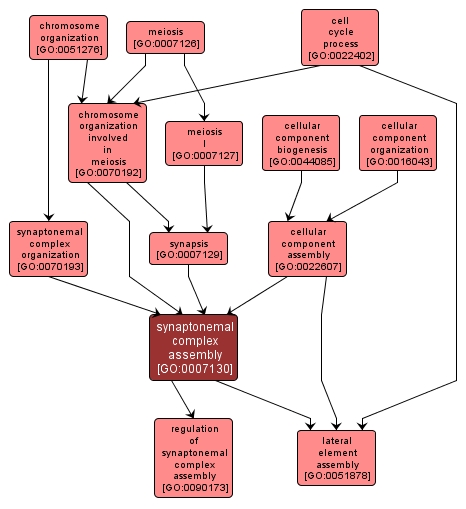GO TERM SUMMARY
|
| Name: |
synaptonemal complex assembly |
| Acc: |
GO:0007130 |
| Aspect: |
Biological Process |
| Desc: |
The cell cycle process whereby the synaptonemal complex is formed. This is a structure that holds paired chromosomes together during prophase I of meiosis and that promotes genetic recombination. |
Synonyms:
- synaptonemal complex formation
|
|

|
INTERACTIVE GO GRAPH
|














